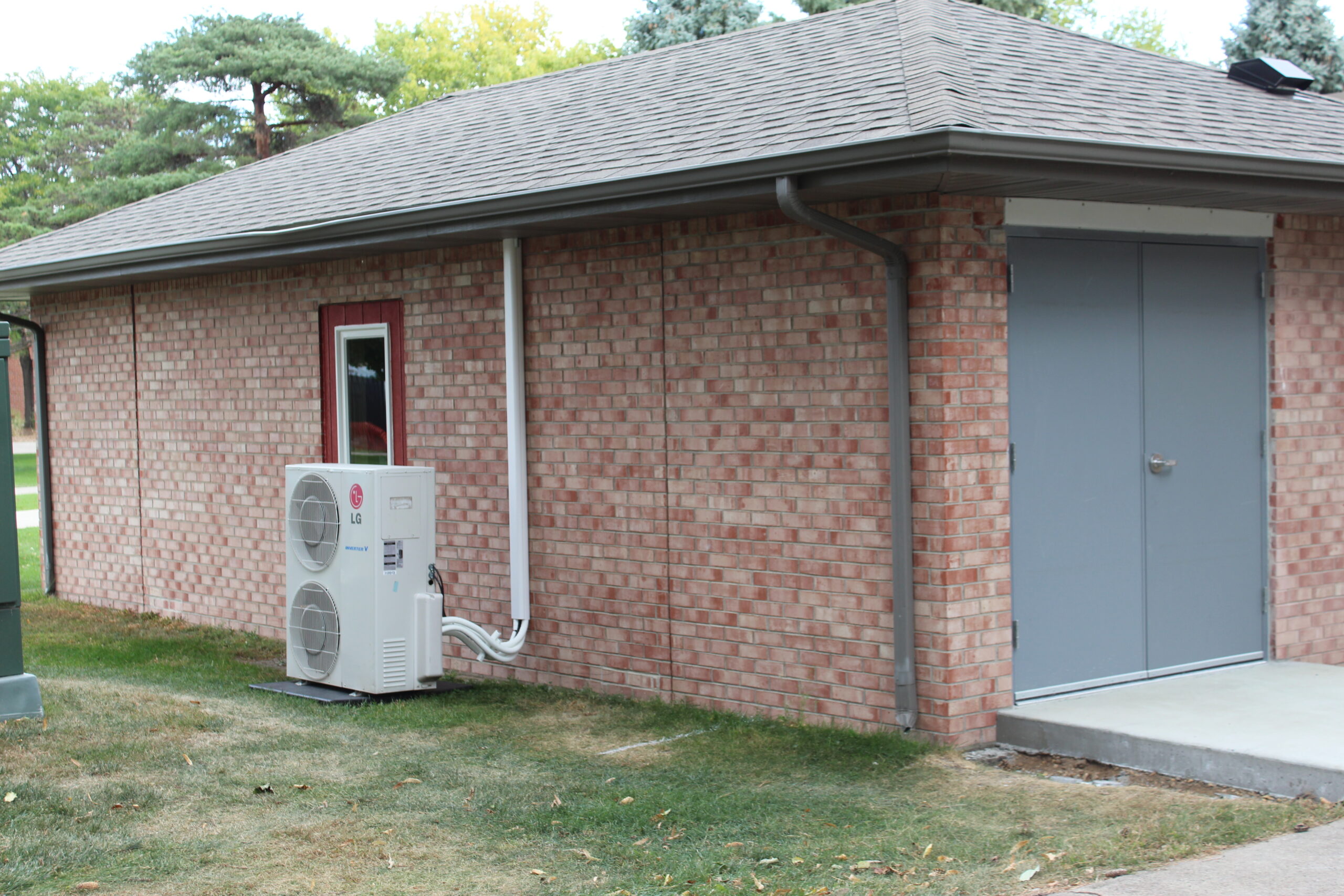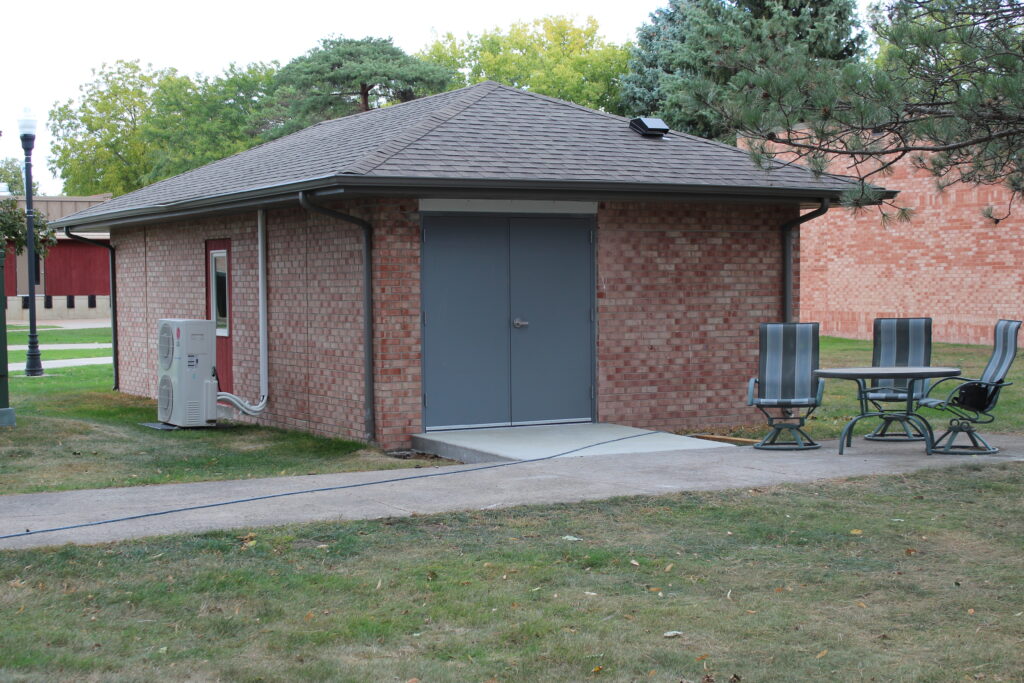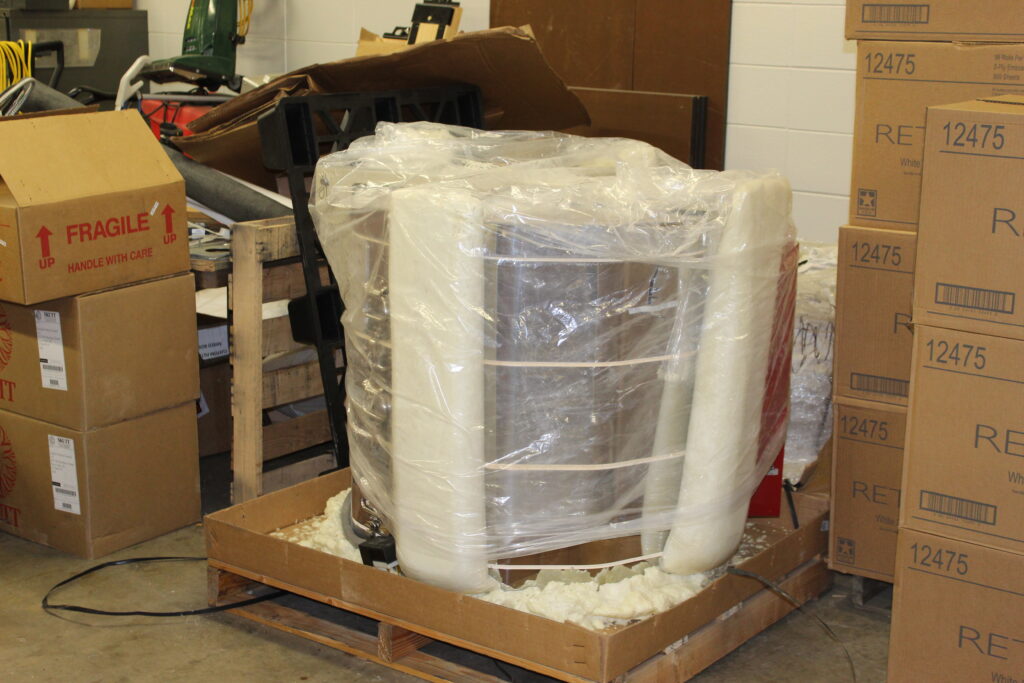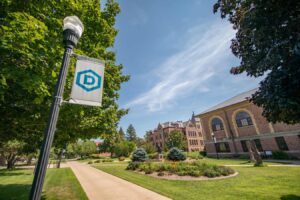Creativity, Clay, and a New Kiln

Anyone who has been on campus since the beginning of the semester has no doubt seen the construction that is once again taking place at DSU. While the new dorm building has been getting the most attention, it might have been easy to miss some other construction that has taken place. Currently, the Arts and Sciences College is in the process of establishing a facility for a new up-to-date kiln. This has involved the renovation and construction on the small brick building that sits between Kennedy Center and Beadle Hall. The building will house a new plasma cutter for the MadLabs’ AdapT lab as well as new relevant tools needed for working with clay. I discussed the ongoing updates with Assistant Professor of Art, Angela Behrends. As instructor of 3D Design classes, she is responsible for the operation of the kiln and very familiar with the process of working with clay.

According to Behrends, a kiln replacement in a new location has been in planning for a few years. With concern for safety, the decision was made to renovate the small brick building which was otherwise being used for storage. Angela described the old kiln that was in the basement of Beadle hall as “something close to ancient,” emphasizing that it was unsafe to operate. An up-to-date machine with an application for remote monitoring the kiln will not only be easier to use but also greatly increases safety. There is no need for “someone to babysit the kiln” as Behrends phrased it, thus ensuring it is continuously at the correct temperature and can be done without introducing unnecessary safety risks. Behrends is planning to have a small worktable and stations installed that will transform it into a workshop for clay when the kiln is not being run.

Having more tools means that there are increased opportunities for more creativity. The new facility will not only benefit students with art majors relating but will also be a good thing for all students. “We need outlets for expression!” Behrends said, adding that working with clay is good for the body and can even be therapeutic. She also mentioned that Game Design and Digital Arts and Design students can especially benefit from working with clay. Building in three dimensions physically can help with mentally imagining how things will be built with CAD programs. It gives a physical representation of how to model digitally. Having knowledge of both techniques can give a deeper understanding of the processes, which often results in higher quality art overall.

Professor Behrends also acknowledged the need for more “hardware with a warm aesthetic.” Rather than the cookie-cutter designs of off the shelf electronics, we should strive for a more personalized computing experience. The appreciation for building something with your hands that working with clay offers could certainly be expanded into more fields of study. With the installation of a new kiln alongside a plasma cutter, there are now several opportunities for students to put their computers and phones down and get their hands dirty building something. After all, the desire to sculpt something from clay comes from the same creative part of the mind that inspired people to build things like computers and phones. We spend too much time on autopilot doing what we are supposed to that we often forget to appreciate the joys of life. Sometimes creativity expressed through artwork is exactly what is needed to bring us to the next greatest innovation for society.







